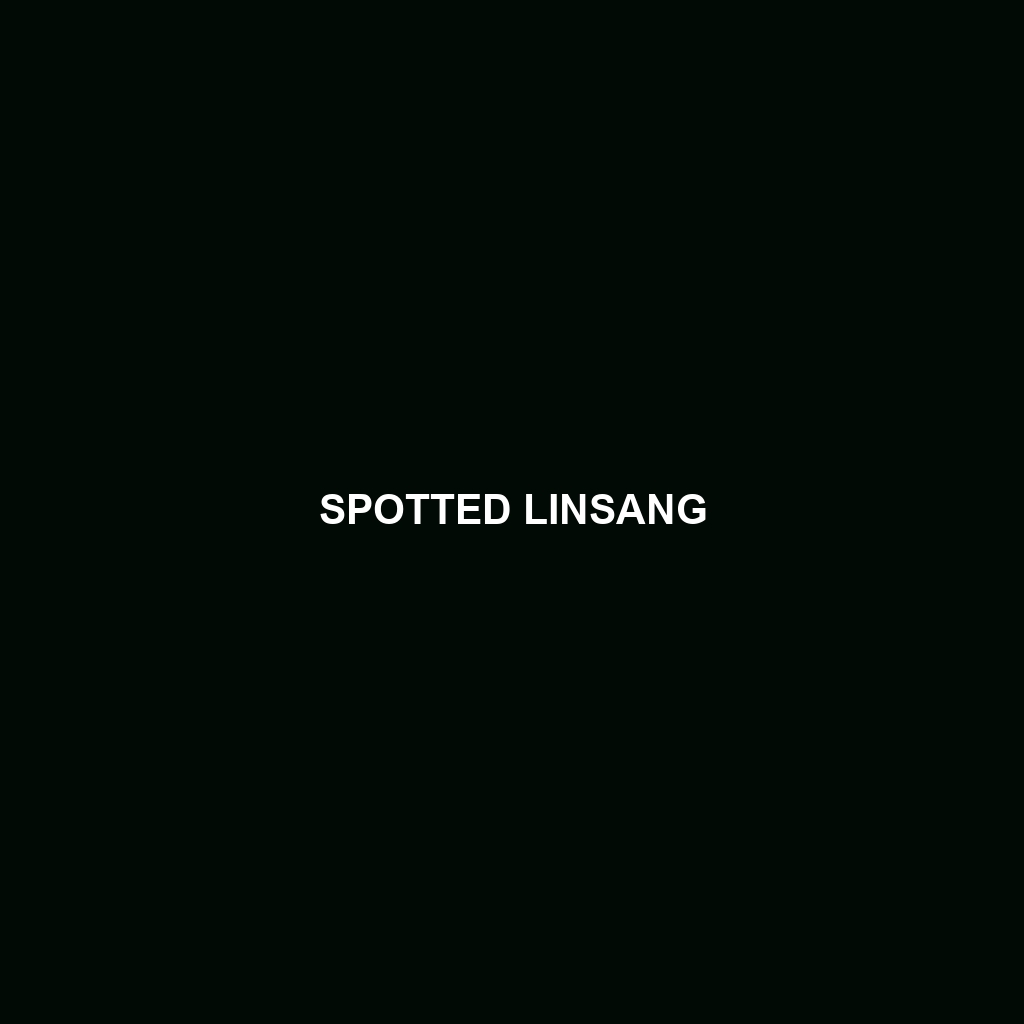Banded Linsang Species Description
Common Name: Banded Linsang
Scientific Name: Prionodon lengha
Habitat
The Banded Linsang is primarily found in the tropical forests of Southeast Asia, including regions of Thailand, Malaysia, and Indonesia. This elusive species thrives in dense foliage, preferring both lowland rainforests and the edges of secondary forests, where it can climb trees and hunt effectively. The humid environment of these habitats is crucial for its survival, providing ample cover and hunting grounds.
Physical Characteristics
The Banded Linsang typically measures about 50 to 75 cm (20 to 30 inches) in length, with a long, slender body and a tail that is almost as long as its body. Its fur is characterized by a striking pattern of dark brown and cream-colored bands, which aids in camouflage within its forested habitat. The species has a pointed snout and large, expressive eyes that enhance its night vision, aiding in its predatory behavior during nocturnal activities.
Behavior
Banded Linsangs are primarily nocturnal and are known for their arboreal lifestyle, often being spotted climbing trees in search of prey. They are solitary animals, marking their territories with scent markings. Their agile movements allow them to navigate through trees with ease, displaying remarkable climbing abilities. Vocalizations, including a series of chirps and growls, are also used for communication during mating season or territorial disputes.
Diet
The diet of the Banded Linsang consists mainly of small mammals, birds, and insects. It is an opportunistic feeder, utilizing its keen sense of hearing and sight to hunt at night. By primarily preying on nocturnal species, the Banded Linsang plays a crucial role in controlling small mammal populations within its ecosystem. Its hunting strategy often involves ambushing prey from a concealed position.
Reproduction
The Banded Linsang’s breeding season typically occurs during the rainy months, which coincide with the peak availability of food resources. Females give birth to one to three kittens after a gestation period of approximately 70 to 80 days. The young are born blind and rely heavily on their mother for sustenance and protection during their early weeks. Weaning occurs around 8 to 10 weeks, after which the kittens start to learn hunting skills.
Conservation Status
Currently, the Banded Linsang is classified as Vulnerable by the International Union for Conservation of Nature (IUCN). Its populations are declining due to habitat loss from deforestation and illegal hunting. Conservation efforts are critical in preserving its natural habitat and ensuring the survival of this unique species.
Interesting Facts
One fascinating aspect of the Banded Linsang is its resemblance to civets, though it belongs to a different taxonomic family. Unlike many other feliforms, the Banded Linsang has a retractable claw system that enhances its climbing agility. Additionally, it is sometimes referred to as the “tree linsang,” emphasizing its specialized arboreal adaptations.
Role in Ecosystem
The Banded Linsang plays a significant role in its ecosystem as both a predator and prey. By controlling populations of small mammals and insects, it maintains a balanced food web within its habitat. Furthermore, it serves as prey for larger predators, contributing to the biodiversity and ecological dynamics of tropical forest ecosystems.
